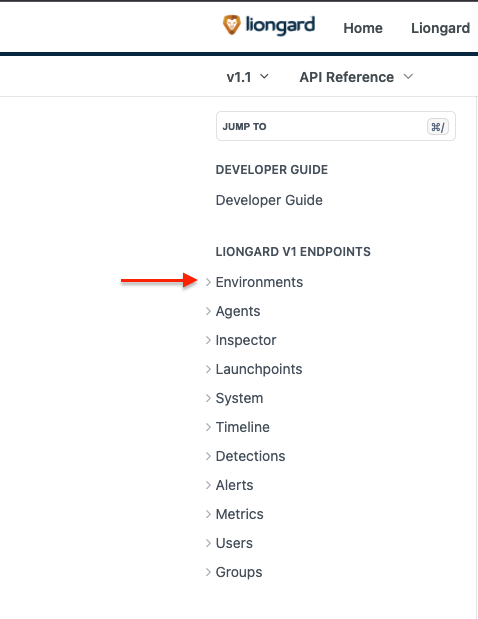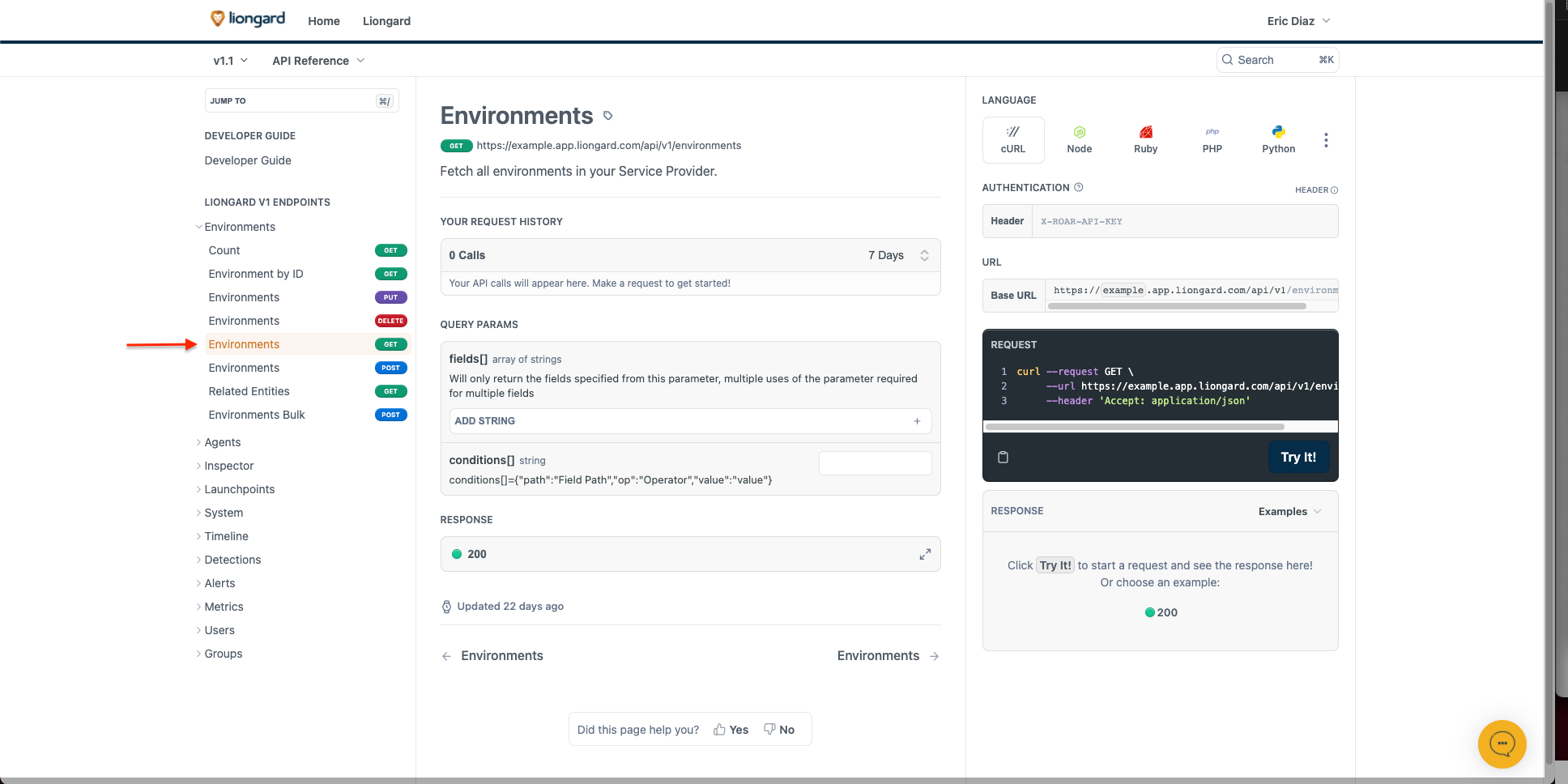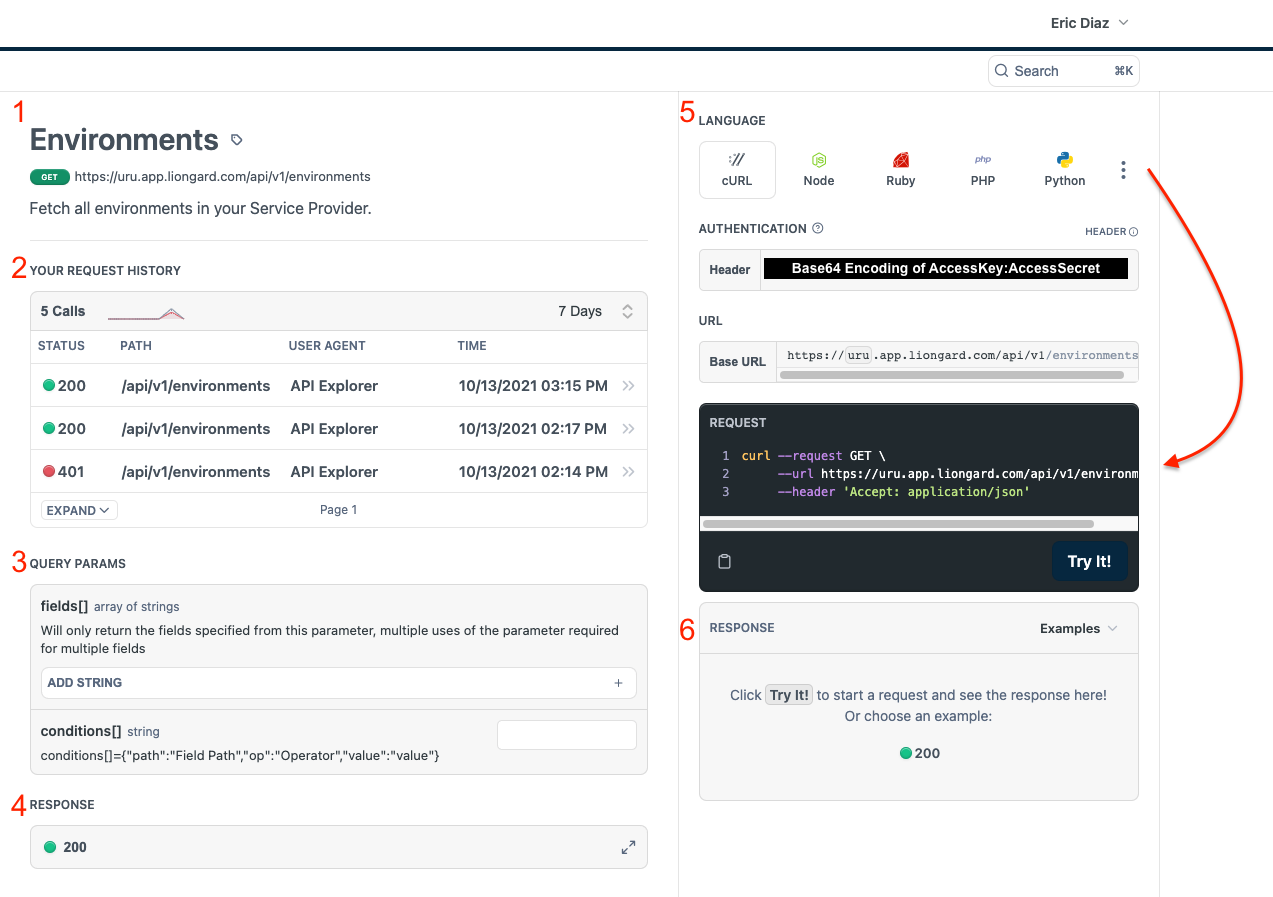Our API explorer is a great way to test a few of our API endpoints against your Liongard instance and to observe the kind of data returned from our API. If you want to test all of our endpoints with more ease, we do provide a Postman Collection and swagger file.
Navigating the Explorer
Our API explorer is a great way to get a visual look into how our endpoints are structured, how query parameters are used, how the request/response schema works, and to be able to do a quick test against your account.
On the left-hand side, you can navigate through our endpoints by their resource type, below we will explore the "Environments" resource type:

Once you select a resource type, the drop-down expands and shows a list of available endpoints for that particular resource.

From here you can navigate through all the available endpoints at each resource level.
Endpoint Explorer Screen
Each endpoint has a number of different sections you can use to test our endpoints. Below you can see a breakdown of each section and its use.

1. Endpoint Name and Description
This section will contain the endpoint name and path for how you can hit this endpoint. It will also contain a brief description of the content you can expect in the results from the endpoint.
2. Request History
Here is a history of all the endpoints you have tested via our explorer. This history is tied to the Instance name used in your Base URL.
3. Parameters
This section contains the parameters available for each endpoint and a way for you to use these options while testing via the explorer.
The conditions[] filter requires you to enter the information in the following format: {"path":"Field Path","op":"Operator","value":"value"}. Other fields allow you to add additional entities if you would like to chain them together.
4. Response Schema
This section contains the schema for the response body of the request. This can be used if you would like to learn more about the response and what data types it contains.
5. Testing Requests
This section is where you will configure your explorer to send test requests. At the top, you can select which language you would like to be shown as a code snippet for the request.
- First, you will want to add your Authentication Header This will be the base 64 encoded string of your
AccessKey:AccessSecret.Make sure to include the:in the string when encoding for the correct value. - Adjust your base URL to match that of your instance. For example, if your Liongard Instance URL is "https://us1.app.liongard.com: you will adjust this field to be "us1.'
- Press the "Try It!" button to fire off the request. If the request is successful, or not, it will display below in Section 6.
6. Response Body (Example & Live Results)
This section contains the response body by showing an example for anyone that does not have an instance to test against. This will provide the request body results from any testing done in Section 5. You can reference the schema in Section 4 if you would like to know the data types for each value.
